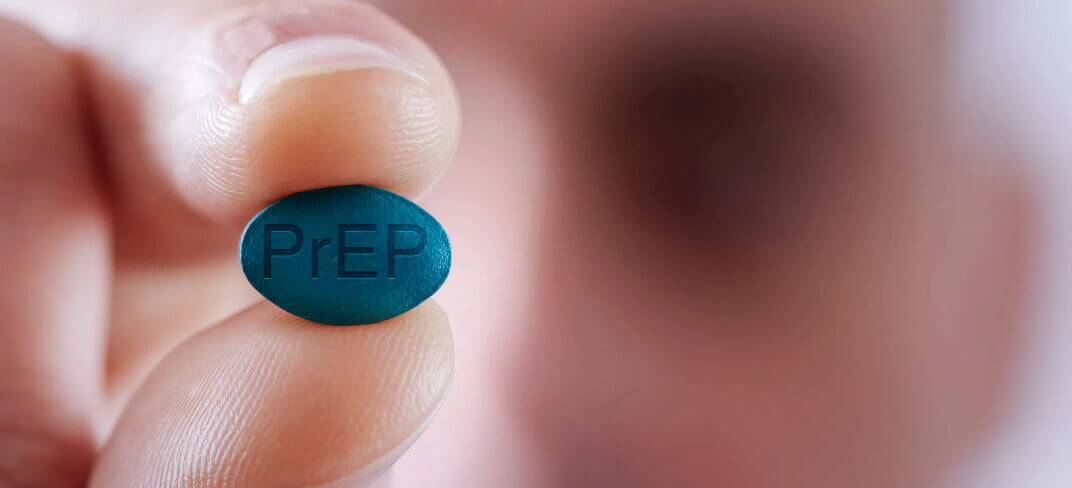PrEP and HIV: How to Reduce the Risk of Infection

If you are among those at high risk of contracting HIV, you may have heard of PrEP, a pharmacological treatment that can significantly reduce the chances of infection. Despite advances in prevention, HIV remains a current reality. In 2023, Italy reported 2,349 new HIV diagnoses, equating to an incidence of 4.0 new diagnoses per 100,000 residents. According to data from the AIDS Operational Centre (COA) of the Istituto Superiore di Sanità, there was a decrease in cases from 2012 to 2020, but from 2021 to 2023, a progressive increase was observed, with a more marked rise among people aged 40-49 and in heterosexual transmission.
Fortunately, prevention strategies continue to evolve. Among them, PrEP (Pre-exposure Prophylaxis) is a highly effective option for those more exposed to the risk of contracting HIV. Thanks to scientific advances, it is now possible to better protect oneself and help reduce the impact of this infection.
What is PrEP?
PrEP (Pre-exposure Prophylaxis) is a pharmacological treatment that, when taken correctly, highly effectively prevents HIV infection, helping to reduce transmission rates in higher-risk communities. This prophylaxis is intended for HIV-negative individuals, particularly those engaging in unprotected or casual sexual relationships.
It is important to know that PrEP does not protect against other sexually transmitted infections (STIs), such as gonorrhea, syphilis, Chlamydia, genital herpes, or hepatitis.
The therapy involves taking a combination of antiviral medications before engaging in high-risk sexual encounters. It is generally well tolerated, with rare and reversible side effects. However, starting PrEP requires preliminary tests and regular monitoring, as outlined in the Italian guidelines, which include screening for STIs and blood tests.
Prescribed exclusively by an infectious disease specialist, PrEP is available at pharmacies and can be followed in specialized clinics. At the UPMC Salvator Mundi International Hospital, Dr. Christof Stingone, an expert in infectious diseases, offers targeted consultations, specialist check-ups, comprehensive STI screenings, and support in selecting the most appropriate therapy.
PrEP is part of a combined prevention pathway, designed for those most exposed to the risk of contracting HIV, ensuring a comprehensive and safe approach to sexual health.
“Can I still get HIV with PrEP?” and Other Common Questions.
PrEP is highly effective in preventing HIV infection, with up to 99% protection if used correctly. However, contracting the virus is still possible, especially with suboptimal use.
Why Might PrEP Not Work?
- Missed doses: Skipping a dose significantly reduces the treatment's effectiveness.
- Mode of virus exposure:
- For those who inject drugs, efficacy decreases.
- In anal intercourse, the risk is higher for the receptive partner (the "bottom") compared to the insertive partner (the "top").
- Number of sexual partners: Protection may be less effective if there are multiple partners, increasing the risk of exposure.
Behaviors and Risk
Some behaviors, such as oral sex, carry a very low risk of infection. However, if repeated frequently without protection, the cumulative risk may increase over time.
To maximize the effectiveness of PrEP, it is essential to:
- Strictly follow the treatment plan.
- Combine PrEP with other preventive measures, such as condoms.
- Have regular check-ups with your doctor to monitor the therapy and health status.
Consultation with an expert in infectious diseases is crucial to assess the safest and most personalized approach to HIV prevention.
Should I Use Other Prevention Methods Along with PrEP?
PrEP is recommended by major health organizations for individuals at high risk of HIV infection, including:
- Sex workers
- People who inject drugs
- Men who have sex with men
- People who have sex with HIV-positive individuals with detectable viral load
Although PrEP offers high protection, its effectiveness depends on correct and consistent use. Therefore, it is advisable to combine PrEP with other preventive measures, such as:
- Condoms: These also protect against other STIs not covered by PrEP.
- Single-use syringes: Essential for those who inject drugs.
- Regular medical check-ups: To monitor therapy and prevent complications.
Learn more about prophylaxis at UPMC Salvator Mundi International Hospital.